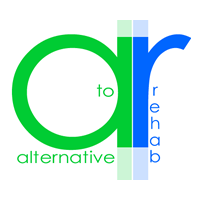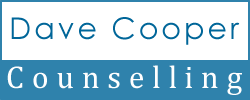
A2R – Podcast – It starts with your state
Have you ever done or said something that you later regretted? Of course you have. But when we find ourselves doing this all the time it can be a nightmare. Actually this is the typical experience of addiction! Listen to this Podcast to get an understanding of how to change things for the better if this is how things are for you.

A2R Blog – Risk
 Hi. Thanks for taking the time to read this. We are on a journey of change from an unhealthy pattern of living to a healthier pattern of facing and processing difficulties. By doing this we simply ‘outgrow’ our problems! How do we do this exactly? Today I want to give you a method of working with your security and how it relates to your growth! By the time you have read this you will have a better grasp on security and how to manage risk!
Hi. Thanks for taking the time to read this. We are on a journey of change from an unhealthy pattern of living to a healthier pattern of facing and processing difficulties. By doing this we simply ‘outgrow’ our problems! How do we do this exactly? Today I want to give you a method of working with your security and how it relates to your growth! By the time you have read this you will have a better grasp on security and how to manage risk!
Firstly let me say that this subject and method will not apply to everyone! In a way every subject is like a door that you can go through either way. Take anger for instance, most of us maybe need to be less angry, but there are some of us that need to get more angry! It is best thought of as learning to be ‘managing’ your anger. Risk is the same, we need to manage it. If you are struggling with a chaotic lifestyle your management of risk is going to look very different from someone suffering with OCD. Of course the obvious example here is a gambling addict, we are going to take for granted that their level of risk is off the charts and in terms of their addiction needs to reduce, but the same could be said about alcoholics who take the chance that they can sober up before an important meeting etc. Even gamblers need to take more risks! By the time you have finished reading this you will understand why I said that, so let’s make a start.
What is risk? At its most basic (which is where we always start) it is choosing a path where we could gain something but we could also lose something. So the first question is where are you with risk? Ask yourself how you handle situations, social, financial, romantic, career, communication etc. This will give you an idea which way you need to go through this door.
Now, look at yourself. What is it that you cannot risk? Are you a people pleaser that cannot risk people not liking you? Are you a workaholic that cannot risk people thinking that you are not giving 100%? Are you someone with low self esteem that cannot risk rejection? Are you someone with anger issues that cannot risk conflict? Are you someone with fear issues that cannot risk conflict? Have you taken a role in your family that makes it impossible to risk disharmony? Have you developed a fear of discomfort so you cannot risk being uncomfortable? Have you developed a belief about the dangers of the world that makes it impossible to risk going outside?
If you think about the concept of balance (see the podcast ‘balance’ on this web site) this is a very good way of thinking about risk! Just see yourself as perfectly balanced. You are standing well, on both feet. Maybe see the wind coming, but you are still balanced. Maybe see someone pushing you, but you are still balanced. Now, we can describe this position as a ‘stable platform’ without this we can do nothing. It is from this stable platform that we can think about risk, you see, if you achieve balance that’s great, but as soon as you achieve it you have got everything you can from it. The next stage is to think about risk. In this picture risk is seen as walking. Think about it, when you walk you lose your balance on purpose! The act of walking is a constant process of losing your balance and regaining it by rebalancing in a different place (one step forward).
So think about risk today, ask yourself these questions;
1 In which areas of my life do I need to be risking more?
2 In which areas of my life should I be risking less?
3 If I take a risk in my chosen area what might it cost me?
4 Am I ready to risk losing that?
5 If I take a risk in this area what might I gain?
6 Does this seem worth the risk?
7 How can I manage the level of risk involved?
Remember, you can’t do anything without risking something. Let’s finish today by looking at a typical risk situation.
Steve is a workaholic. He has his personal/work boundaries all meshed together. This leads to other forms of addiction such as drinking, drug taking and internet porn. He is thinking about risk now and sees that he needs to risk in the area of personal relationships. As he considers this he realises that what he will be risking most is his reputation with work colleagues and bosses if he takes time to socialise. He asks himself if he is ready to pay this price. He has worked tirelessly to create this image in their eyes. He realises that he is not yet ready to do this but feels that the exercise has helped him understand himself better, his weaknesses and his strengths. He will look again at this idea as part of his commitment to recovery.
Of course, like all these processes it is the commitment to practice that counts, not just the knowledge. I hope that helped you. Please email me with any questions.
Thanks again for taking the time today.

A2R Blog – The cycle of addiction
 Hi. Thanks for taking the time to read this. We are on a journey of change from an unhealthy pattern of ‘exits’ from our life to a healthier pattern of facing and processing difficulties. How do we do this exactly? Today I want to give you a method of working with your weakness! By the time you have read this you will have a better grasp on what is going on during your cycle of addiction!
Hi. Thanks for taking the time to read this. We are on a journey of change from an unhealthy pattern of ‘exits’ from our life to a healthier pattern of facing and processing difficulties. How do we do this exactly? Today I want to give you a method of working with your weakness! By the time you have read this you will have a better grasp on what is going on during your cycle of addiction!
To understand this cycle of addiction we should first place it in a context. I want you to think of your time in active addiction. This may be unpleasant and you may be trying to get away from these times and thoughts, but we need to apply a recovery principle here.
Recovery principle – We learn more from our failures than our successes (see ‘the recovery box’ podcast for more on this)
We want to feel better and so we would rather focus on our successes but all the learning is in the failure! I often put it this way to my clients
“Your life is like a house with a lovely looking front garden with sweet smelling roses, we can spend our time there and it will feel great, but we need to be in the back garden where it is a mess and it stinks. If you are brave enough to go there I will go with you”
So how does this apply to this cycle idea? Your cycle is part of your failure to recover. It is the cyclical process by which your addiction kept you trapped. And you need to understand it in order to break it!
Like any chain we break it at its weakest point. But first we need to draw it.
Take a blank page and draw a circle as big as the page will allow. If you think of this as a clock face then start at 12 o clock and go around clockwise. Here are a few questions to ask yourself before you start.
1 How long does it take to get around my cycle? If you start at 12 o clock from the day that you are at your best, maybe clean and sober and wanting to do better, how long does it take you to get back to that day? So this would include all your effort, all your mistakes, all your frustration, all your using, all your drying out period. We need the complete cycle, this may last several months in some cases. If you are a binge drinker you may go six months between drinks, you may then drink for a week and then spend several weeks in hospital. If you are a drug user your cycle may be much shorter. If you are a gambler do not include paying back any moneys, just go up to the day you decide to get better. If you are addicted to internet porn your cycle could be 24 hours or less.
2 What is my main focus? There are several forms this cycle drawing could take. It is all useful and you could complete several versions with different information on each. For instance your first cycle may mainly be about when you are feeling good and when that changes and you started to struggle, or it may just be about your using time. Whichever one you look at it is important that you raise your awareness (See ‘AAA’ podcast for more details)
3 At what point could I change this cycle? Look for the weak point, that moment where you feel you could break this chain (See ‘the moment of temptation’ podcast for more on this)
Now draw your cycle, divide the circle up into hours, days weeks or months, whichever is appropriate for your length of cycle and then just start adding information as it comes to you. Use different colours if you have them and start again if it gets too full, but keep all the versions! When you have finished, do another from a different point of view such as positivity or resentment levels or relationship quality etc.
How does this help? Once you have this information you can start to know yourself better, your weaknesses and your strengths. You are less likely to fall into traps and walk into difficulties because you start to see them coming. Later, all this information will be useful as you look into your past more deeply through one form of therapy or another.
Of course, like all these processes it is the commitment to practice that counts, not just the knowledge. I hope that helped you. Please email me with any questions.
Thanks again for taking the time today.
